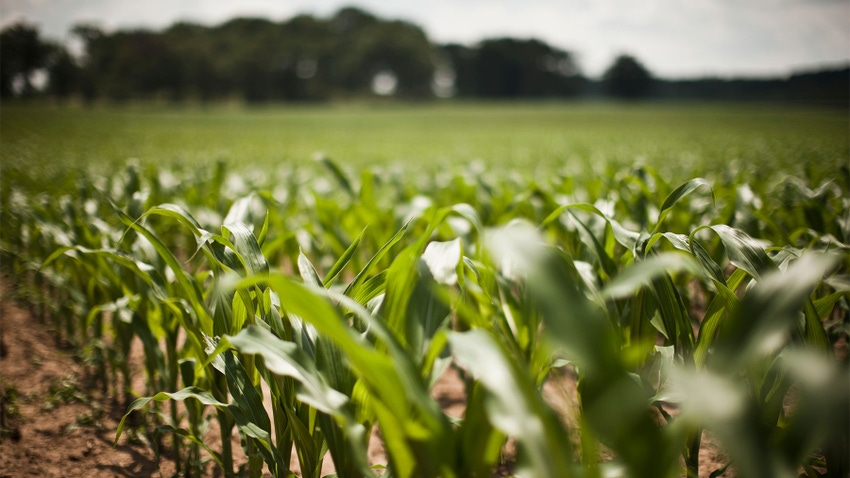
With the corn market continuing to pinch margins, it’s not shocking to see that Michigan growers are expected to cut planted acres from 2.4 million acres to 2.25 million, which is 94% of the previous year, according to the Prospective Plantings report.
Estimates are based on surveys conducted during the first two weeks of March from a sample of nearly 72,000 farm operators across the nation. The report was released March 29 by USDA’s National Agricultural Statistics Service.
The rest of the country’s corn growers are expected to do the same, as they intend to plant 90 million acres of corn for all purposes in 2024, a decrease of 5% from last year. Planted acreage is expected to be down or unchanged in 38 of the 48 estimating states.
Corn acreage decreases of 300,000 acres or more from last year are expected in Illinois, Indiana, Iowa, Minnesota, Missouri, Ohio, South Dakota and Texas. The planted acreage in Iowa will be the lowest since 2006, while the planted acreage in Montana will be the highest since 1958, according to the report.
Overall, Michigan’s principal crop acreage is expected to take a notch down from 6.27 million acres last year to 6.122 million acres in 2024.
Soybean acres expected to increase
Some of that acreage is undoubtably going into soybean acres, which are expected to increase in Michigan from 2.04 million acres to 2.2 million acres, up 8% over 2023.
Nationally, soybean growers intend to plant 86.5 million acres in 2024, up 3% from last year. Soybean-planted acreage intentions are up or unchanged in 24 of the 29 estimating states over the previous year.
In addition to Michigan, increases of 100,000 acres or more are anticipated in Arkansas, Illinois, Indiana, Iowa, Kentucky, Louisiana, Minnesota, Missouri, North Dakota, Ohio and South Dakota. A decrease of 180,000 acres is expected in Kansas. If realized, the planted area in Kentucky and New York will be the largest on record.
Forecast for wheat, oats, hay
With Michigan’s wet fall that delayed corn harvest until mid-December for some growers, getting in winter wheat was out of the question. Wheat planting for 2024 is at a record low with a decline from 600,000 acres to 420,000 — a 30% drop.
The decline nationally, however, in winter wheat is anticipated to drop less dramatically at 7%. Winter wheat acres for the country are estimated at 34.1 million acres. The only states expecting increased acreage from 2023 are Montana and Washington. If realized, Utah and Virginia will also have record-low planted areas.
Michigan’s harvested hay is anticipated to remain constant at 780,000 acres. Oats are expected to go from 50,000 to 60,000 — and barley from 7,000 to 8,000 acres in Michigan.
Sugarbeets gain acreage
Also gaining acreage in Michigan, sugarbeet planting is expected to rise 1,000 acres to 134,000.
For the U.S., sugarbeet planting intentions are the lowest since 2018, with an estimated 1.13 million acres, down 1% from 2023. Intended acreage in North Dakota is expected to be down 7% this season from the previous year.
Dry edible beans see increase
Michigan growers plan to plant 5% more dry edible beans with a predicted 220,000 acres total — a 5% jump.
The increase is even more pronounced at the national level, as growers in every state plan to increase planted acres. USDA predicts growers will plant 1.32 million acres in 2024, up 14% from the previous year. All states in the estimation program show an increase from last year.
Grain stocks report
On March 29, NASS also released the quarterly Grain Stocks report to provide estimates of on-farm and off-farm stocks as of March 1. Key findings in that report include:
Corn stocks totaled 8.35 billion bushels, up 13% from the same time last year. On-farm corn stocks were up 24% from a year ago, while off-farm stocks were down 1%.
Soybeans stored totaled 1.85 billion bushels, up 9% from March 1, 2023. On-farm soybean stocks were up 24% from a year ago, while off-farm stocks were down 3%.
All wheat stored totaled 1.09 billion bushels, up 16% from a year ago. On-farm all wheat stocks were up 20% from last year, while off-farm stocks were up 14%.
The Prospective Plantings, Grain Stocks and all other NASS reports are available at nass.usda.gov.
About the Author(s)
You May Also Like






